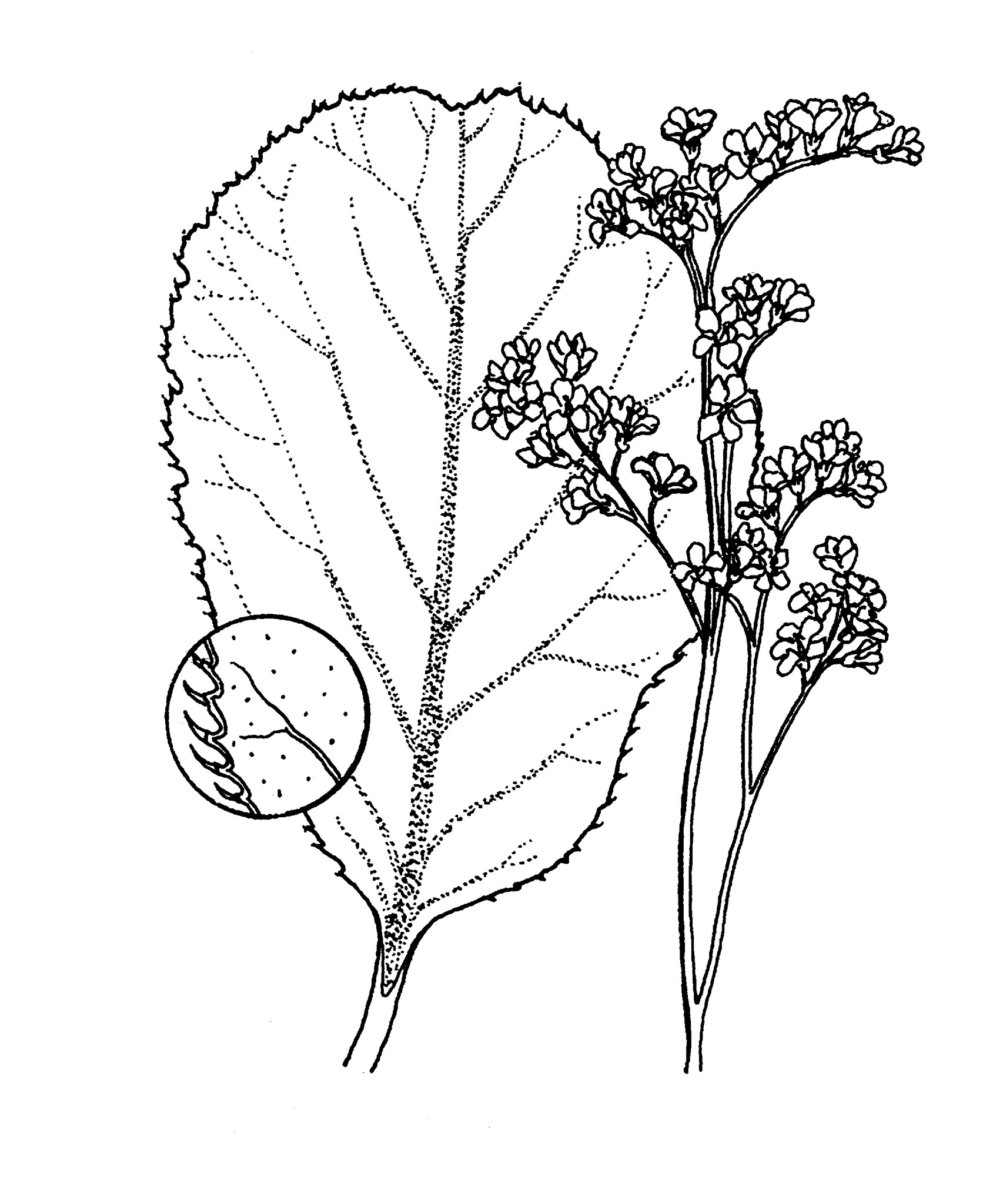
The following description applies to plants in Australia. Leaves obovate to elliptic, hairless, to 30 cm or more long; margins generally wavy, with minute hair-like teeth, shallowly indented to form broad irregular teeth, at least at the tip. Flowers pink, the petals 1.4-1.9 cm long, with darker colouring along the narrowed part of the petal towards its base; paling with age, on arching to erect-branched, pinkish flower stems; late autumn and winter, mostly June. Carpels and styles reddish with age.
This is the hybrid B. ciliata × B. crassifolia, a robust, evergreen, vigorous hybrid that is probably the most common Bergenia of gardens, both in Europe and Australia. It originated in Europe and was first described in 1868. Plants in Australia differ slightly in description from those available in the UK.
B. crassifolia (L.) Fritsch., Siberian Tea, from Siberia and Mongolia has leaves hairless, the margins with shallow teeth and flowers nodding, petals 8-15 mm long, obovate, dark pink to crimson; early to mid-spring.
Garden origin.
Source: (2002). Saxifragaceae. In: . Horticultural Flora of South-eastern Australia. Volume 3. Flowering plants. Dicotyledons. Part 2. The identification of garden and cultivated plants. University of New South Wales Press.
